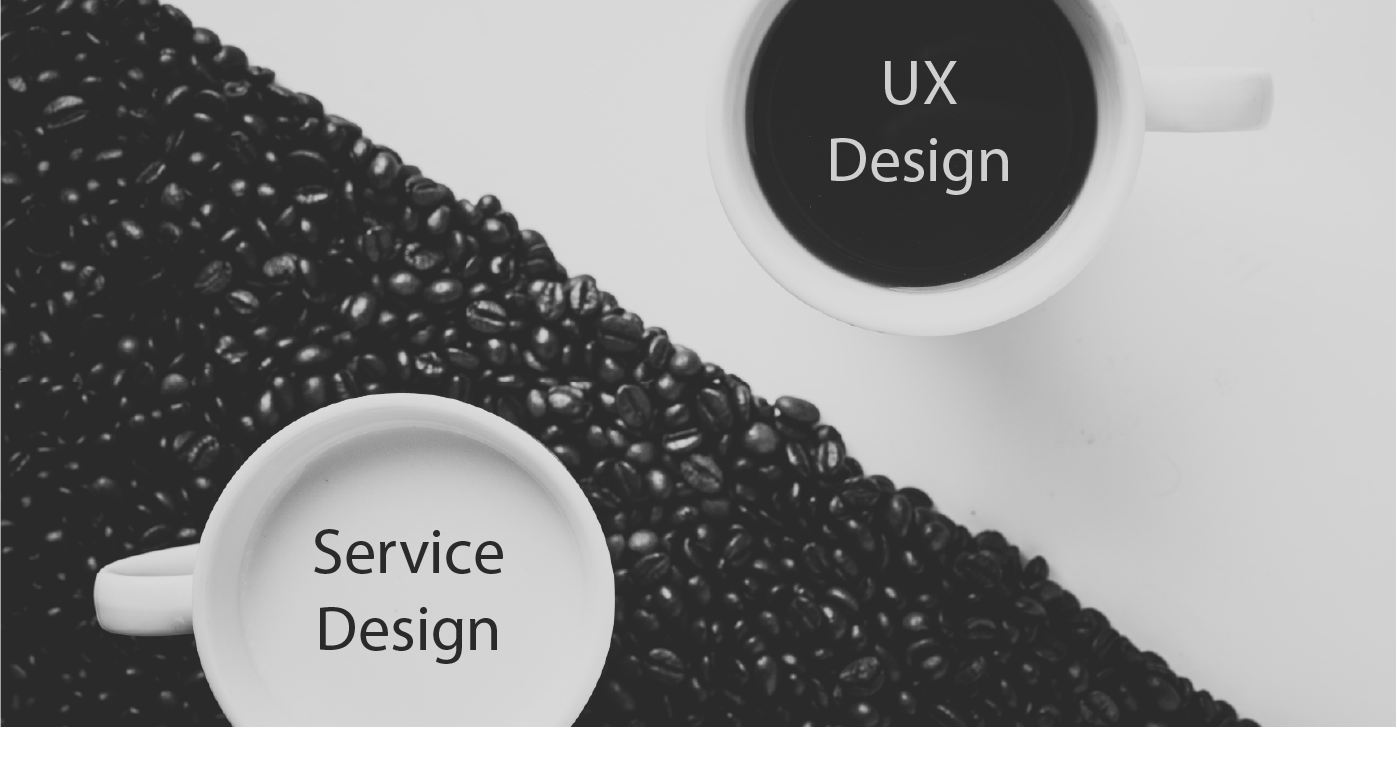I interview many people and often apologise before I ask the clichéd question of, “How do you define Service Design, and how do you define UX Design — what is it that makes them different?”
UX Design (Experience Design), fuelled by the rise of digital, has become more established these days with some great work being done the field. It has naturally been expanding into the realms of ‘Service Design’*, but I’ve noticed that what constitutes people’s understanding of Service Design, and a Service Designer, appears to misalign with what I believe the criteria and components are.
* there is also a route into Service Design (to a lesser extent) from the other direction, i.e. where businesses are trying to shape services from a human-centred viewpoint.
To help illustrate how I see it, here’s a quick model I drew up.

At its centre and start point is what I think and hope everyone agrees is definitely UX Design -as thought of in the market place (there is of course more than this, and that’s what we will explore). This is the practice of creating a digital function, process or experience at a touch point; commonly illustrated through journeys, user stories, flows, wireframes and screens (or of course these days, also audio, VR etc.).
Now, I’ve noticed 4 dimensions, or 4 components, through which, when people cross or perform, they believe they have moved from the world of UX Design into Service Design.
First — Research
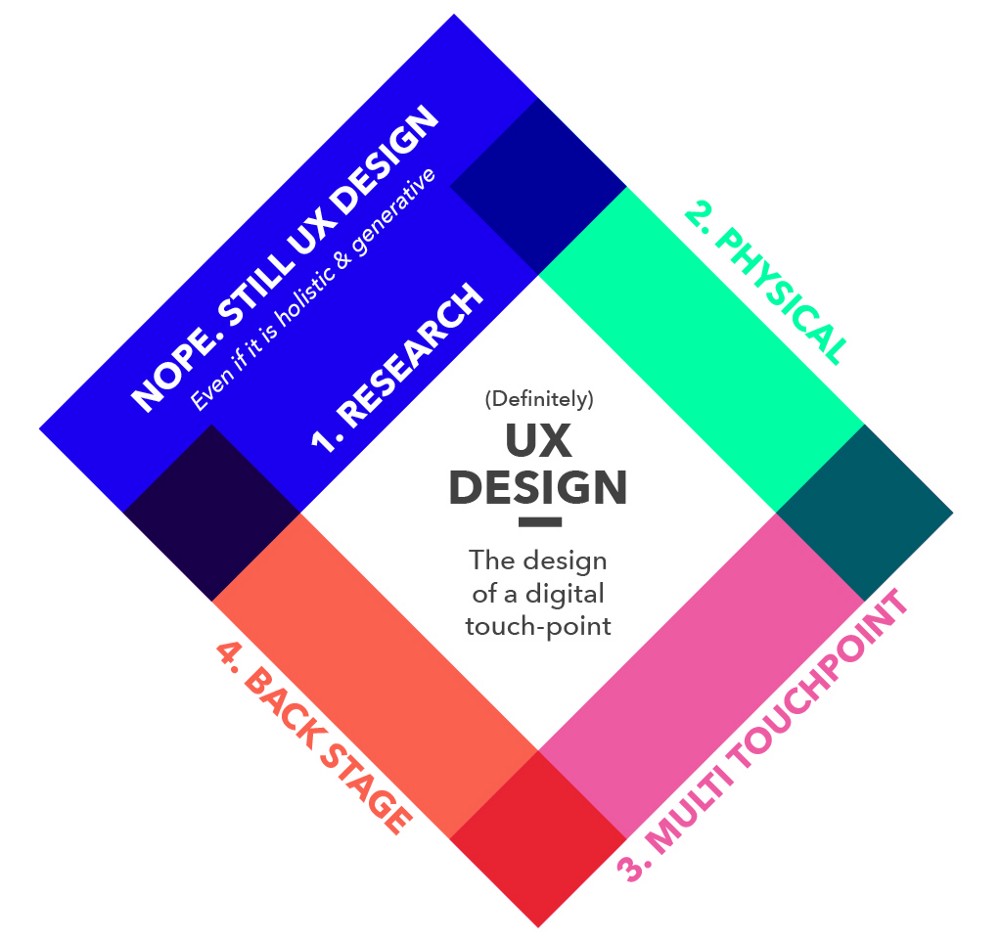
I’ve noticed that the act of doing research, yes, more generative, wider, ethnographic and behaviour research, and not the more evaluative, narrower research normally associated with testing for a touchpoint solution, has started to be seen as ‘Service Design’. In my book this is still just Research. Invaluable and necessary, and all the better for it being wider in scope and depth, but it is still Research.
Let’s be clear, Research does not equal Service Design, although that generative, holistic level of research is the critical starting/building blocks for good Service Design.
Research is and should be an essential for UX design; its scope is up to you. So if you’re doing research, you’re still in the realm of (good) UX Design.
Next — Physical Vs Digital
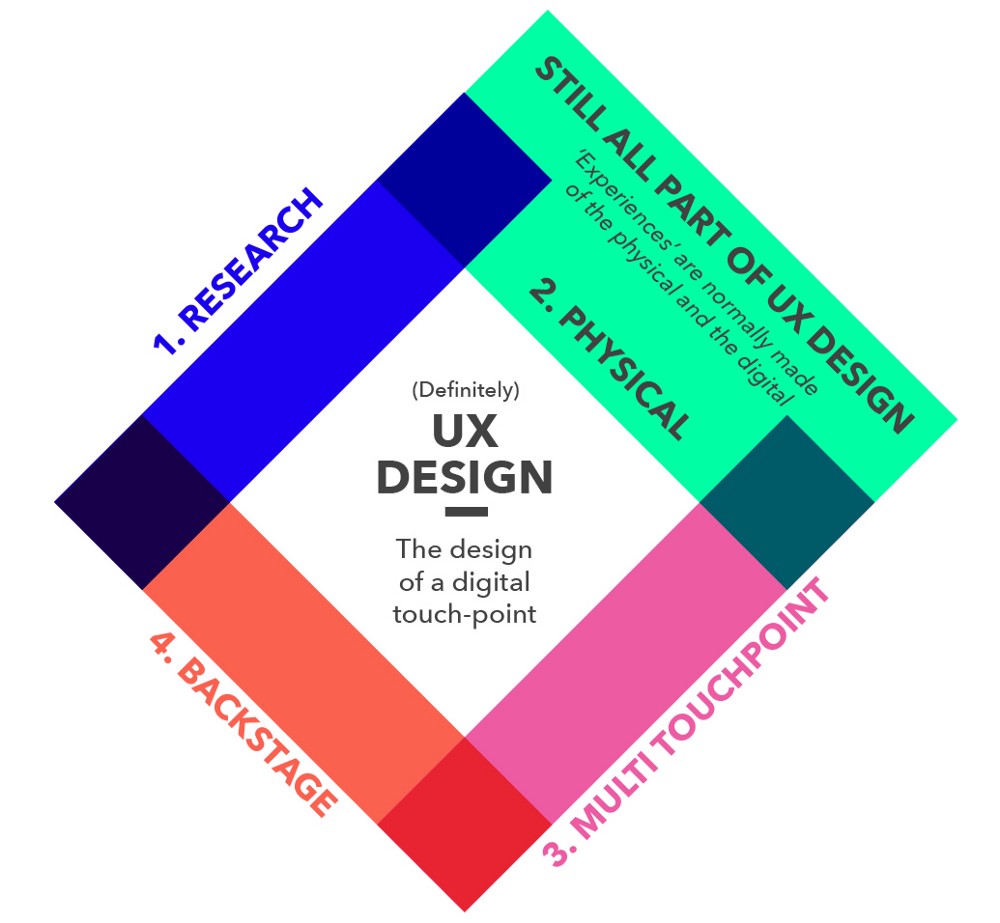
Some start suggesting that once we start looking beyond the digital interface (screen, voice, or virtual), then this becomes Service Design. I think if we look at the literal word ‘Experience’ the clue is in there. Our experiences are always made up of more than interactions with digital objects. The physical — whether that be products, or spaces, or conversations, is absolutely key in our perception of an experience.
So even if you’re defining and designing both the physical and digital, that’s still UX design. They are both delivering an experience to the end user/customer.
Again, thinking about the physical aspects of any experience, is a key part of service design, but by itself it is not/not equal to Service Design.
Singular Vs Multi Touchpoint
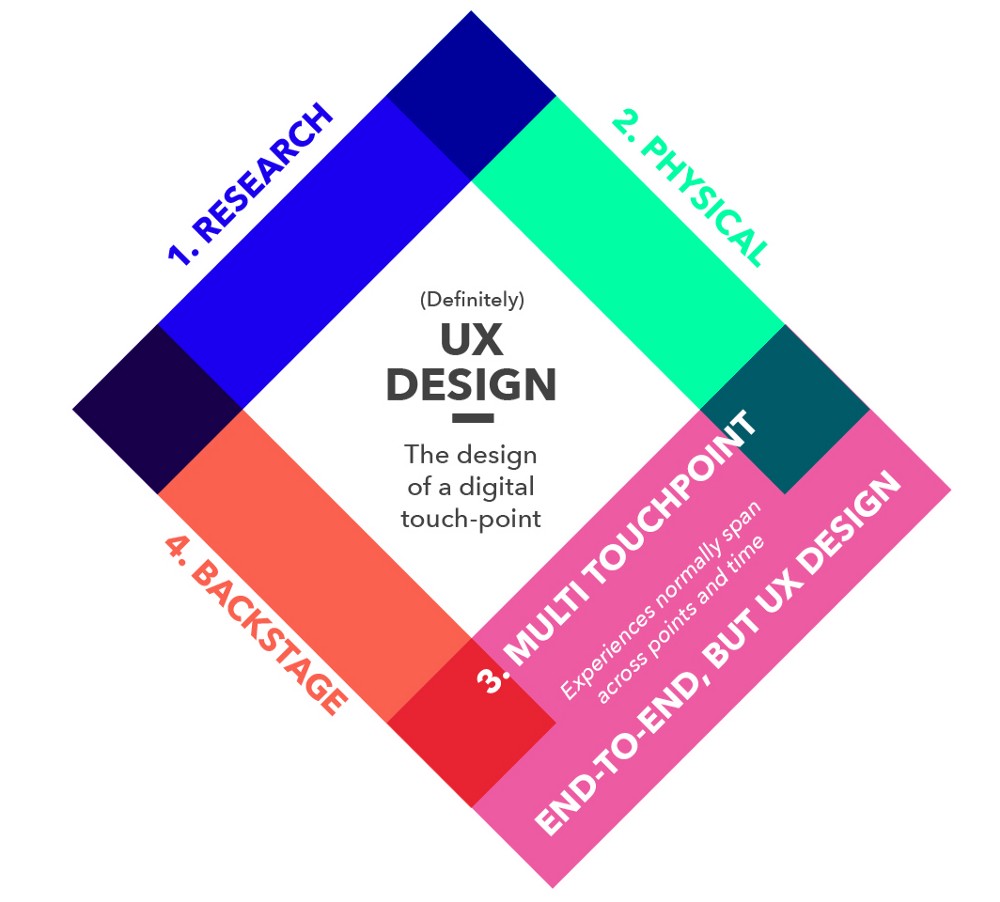
Next, I’ve seen that when the design of something expands beyond looking at a singular touchpoint of interaction, and across a multi or omni-channel journey; where a user has a variety of interactions, with different devices (or people, or systems, or business areas) then this is seen as Service Design.
Closer and warmer, but not quite. While this level of thinking has reached more holistic heights and covers a multitude of exchanges along a journey, it is still predominantly looking at how the person (user, employee, customer) is experiencing, or acting with, something, to result in an outcome.
Good UX should automatically consider the experience of a user or customer across the whole journey regardless of path or medium.
Again, thinking end-to-end through a whole journey, and over multiple use cases, is the bedrock of good Service Design, but by itself solely, it isn’t Service Design.
Front stage Vs Back stage
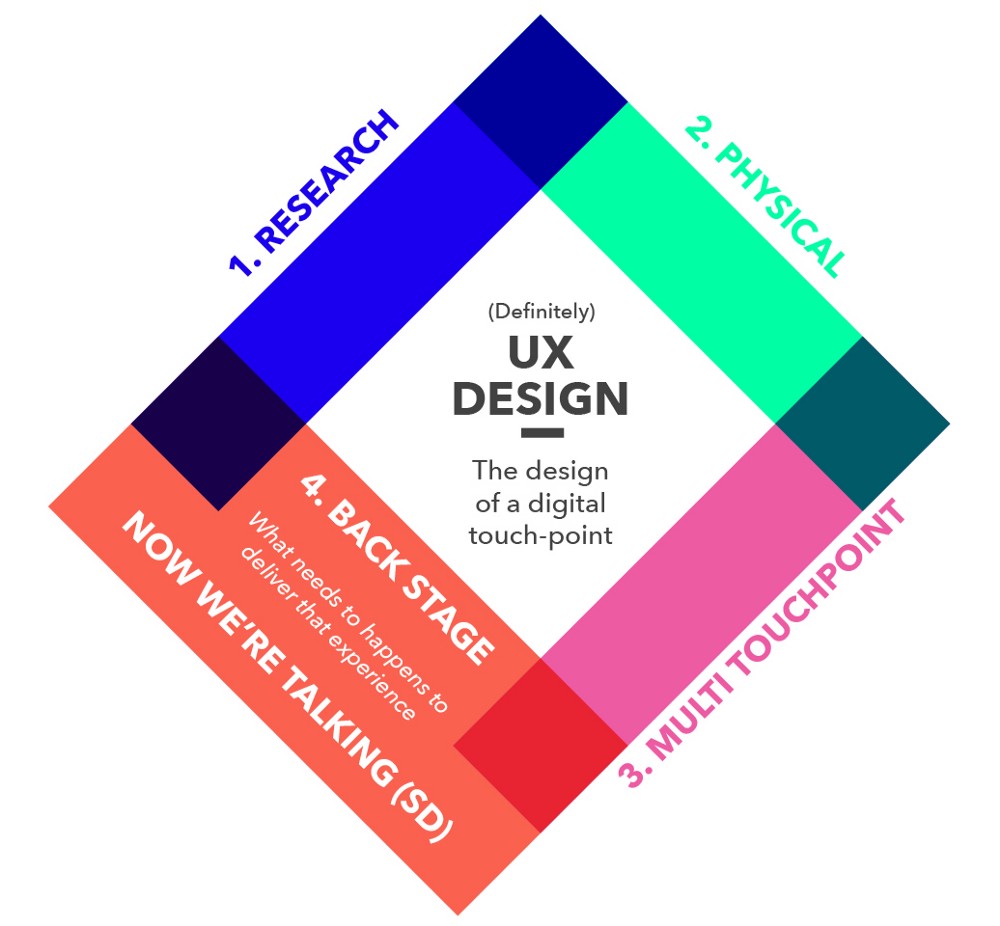
Now we’re talking. This (in my book) is where experience design makes the hop skip and jump into Service Design. Again if we look literally, it reads as ‘the design of a service’. The key here is that a Service, is both the experience that is delivered, as well as the back-stage, internal nuts and bolts workings (whether by a business or organisation) that needs to be defined and take place so that it can deliver on that front-of-stage experience. In this way, the experience is the effect of designing that service.
This is the crux of Service design. It is the behind the scenes goings-on (processes, governance, organisational structures, change management, policies, culture even) that need to be designed and crafted in a human centred way such that a human centred front-of-stage experience can be delivered. And to do this well, that person needs to have a greater sense of business knowledge & acumen, blended with the core talents of being a designer; creativity, critical thinking and collaboration.
This is the dimension that needs to be crossed to qualify as Service Design.
[To clarify; front stage does not have to be a customer or external user, but could also be an internal employee i.e where UX is EX. The backstage is the functionings or the mechanisms that facilitate that/any experience like the elements of change management, governance etc mentioned above]
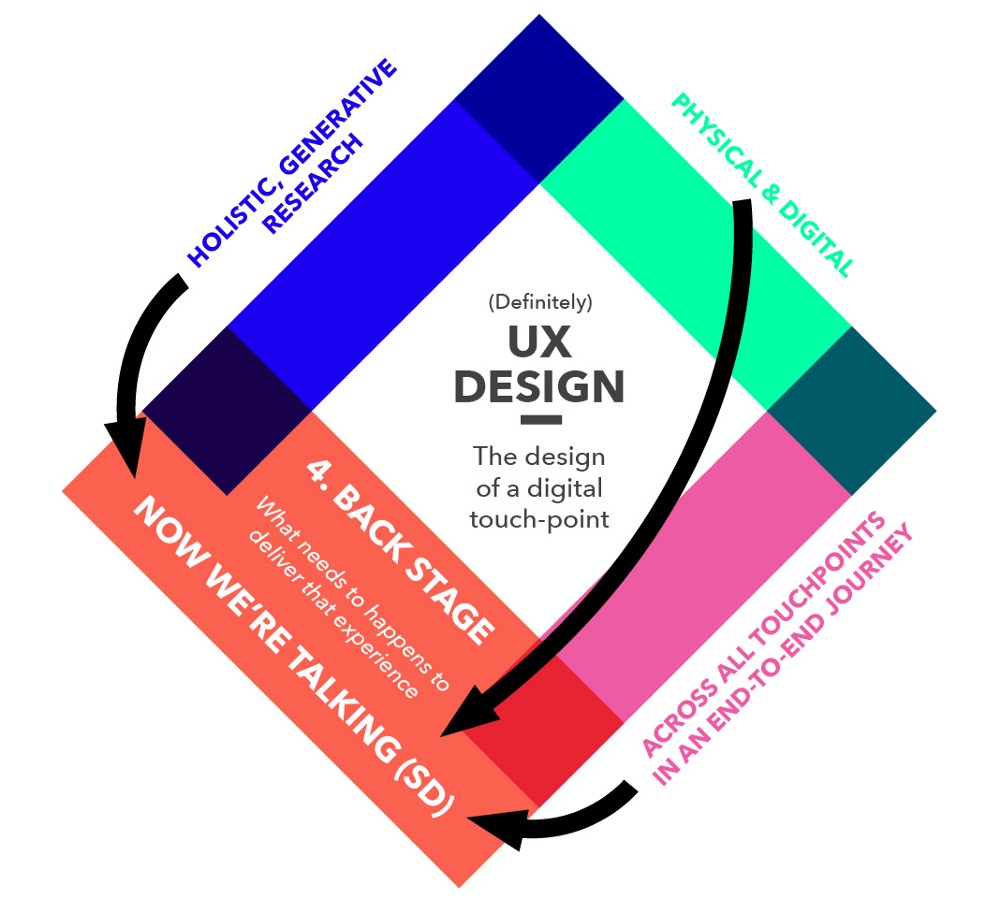
Now, by going through this arc, what I am also saying and agreeing with, is that Service Design DOES indeed include key elements such as generative research, ‘beyond the digital’ thinking, and end-to-end, multi media shaping, but just that any one of these, or even all three of them, do not equate to Service Design itself. They are the foundations and the keystones, but one must look at how we design the backstage service/process to be Service Designers.
… and if we continue along this dimension’s trajectory we will get to business design, but that’s for another blog.


